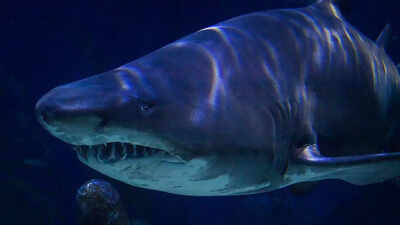Trending
Largest shark ever lived was not as bulky as we thought—scientists uncover shocking details
New research reveals that the megalodon likely had a slender body more akin to a lemon shark than a great white. This discovery suggests the ancient predator might have been as long as 80 feet, rather than previously estimated sizes. Verification awaits a complete skeleton discovery.
For years, scientists assumed that the massive megalodon resembled an oversized great white shark. But what if that assumption was wrong?
Kenshu Shimada, a paleobiology professor at DePaul University, and his colleagues started questioning this idea a few years ago. Their doubts grew after reviewing a 2022 study that used a 3D model to estimate the megalodon’s size. Shimada noticed that some of the math behind the shark’s proportions didn’t quite add up.
That’s when the lightbulb moment hit. “We kind of realized—click—that the great white shark is not a good model,” Shimada explained.

An alternate way to size up Megalodon
The results were surprising. Instead of the bulky, muscular build of a great white, the megalodon likely had a longer, more streamlined body—closer in shape to a lemon shark. This discovery has the potential of changing our understanding of megalodon.
Why do some marine animals get so big?
“If you stay in a skinnier body, there is a better chance of being able to grow larger,” Shimada said. And based on his team’s calculations, megalodon may have been as long as 80 feet (24 meters)—much bigger than previously believed.

What comes next?
“What we really need is the discovery of the complete skeleton,” Shimada emphasized. “That will support or refute whether it was really skinny or stocky.”
Until then, the mystery of megalodon continues—but thanks to this research, we’re closer than ever to understanding the true form of the ocean’s most legendary predator.
End of Article
FOLLOW US ON SOCIAL MEDIA
Visual Stories
Tired of too many ads?








